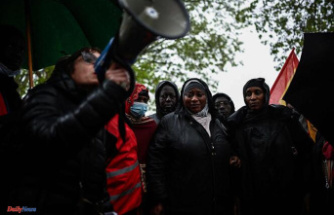again stood in the queue, behind the average Spanish and european, in the post 46th
Just when the Yearbook of Education developed by the Universitat de les Illes Balears (UIB) saw green shoots in the education of the balearic islands -with a hopeful reduction of the rate of repeaters - here comes another report to bring out the colors to the Balearic islands, placing it as the region with the worst results of Spain and throughout the European Union. Again, because in 2016 we already got the colors.
According to the Index of Youth Development Compared to 2018 elaborated by the Centro Reina Sofia Adolescence and Youth (ProyectoScopio), the Balearic islands recorded the worst results in the educational field, behind Romania, Malta, Castille-La Mancha and the Canary islands. Has the post 46 of 46 territories (28 countries of the Eu and 17 AUTONOMOUS communities). Just get a 2.5 out of 10, very far from the first positions where they are Lithuania (1), and Slovenia (4th), with two regions of spain in second and third place:the Basque Country and Madrid
There are more pupils between the ages of 25 and 29 years with tertiary education, there are less early school leaving among young people from 18 to 24 years and enhances the rate of learning of foreign languages. But they jump the alarms because more and more students of 15 years and 18 to waive to continue their education once they have finished THAT. And there is less population of 22 years studying at university.
The reality of the young people of the Balearic islands has lights and shadows. If we were to compare Tomeu, the prototype of a young spaniard, with his contemporaries Thomas or Thomas from the rest of Spain and Europe, we see that the spaniard found a job much more easily, although it is still below the european average. The balearic islands stands out for having the highest rate of youth employment across the country, with 43.6%, followed closely by Catalonia (43.5 per cent). Without a doubt, this easy to find work impacts negatively on the education. The more you work, more school dropouts, and less desire or need to continue their education.
The last few years show a gradual recovery, higher than the national average, but far from the levels of 2009. In comparison with the previous edition, the youth employment in the Balearic islands improvement in four of the six indicators that comprise this dimension. There are more young people between 15 and 29 years old working and less unemployment in this same age group. There are more self-employed people between 15 and 29 years and enhances the rate of bias unintentionally. Worse, the rate of young inactive persons who do not study and temporality.
If Tomeu want independence, have it more easy than if you lived in Asturias, Andalusia and the Basque Country, regions that have some of the worst rates of emancipation of youth. Balearics lead one of the three best in all of Spain, behind Catalonia and Navarra, although not reaching the values of the start of the crisis. In Luxembourg, Denmark, Finland and Sweden it costs less to leave the house.
The economic crisis has slowed the emancipation of young people, coinciding with the fall of employment. But in 2018 has dropped again for the two age groups of between 20 and 24 years, and 25 and 29 years, according to the study by the Centre Reina Sofia Adolescence and Youth of the Fad.
The index of life left in a good place at the Balearic islands, that stands out in 11th place (46). There are more young people between 22 and 29 years who have children, there are fewer deaths among kids between 15 and 29 years of age, and also reducing deaths in transport accidents. The face of concern is the increase of suicides. In Denmark, the Netherlands and Sweden better lives, while in Bulgaria, Romania and Latvia, worse. La Rioja, Aragón, Madrid, Andalucía and Valencia are in the top 10, ahead of the Balearic islands. Galicia, Extremadura and Cantabria are in the queue, behind the national average.
In regard to the use of information technologies, the Balearic islands are located in the position 17 with a 8.7 out of 10, falling seven positions compared to the previous edition, although above the Spanish average (28) and EU (33). The rate of young users who have not used internet in the last three months to improve but there are less kids with a high level of digital skills.
In summary, it can be said that the youth development Tomeu and his friends improvement in two of the five dimensions that measures this report: education and employment, while back in emancipation, life and use of technologies.
ránkingDesarrollo youth. The balearic islands is ranked 39 (out of 46) in 2018. Goes up 3 positions compared to last year.Education. With an index of 0,254 (scale 0-1), the Balearic islands are located in the last position (46). In all the editions of this index has been placed in the queue.Employment. With an employment rate of 0,528 is in 28th position, climbing 2 positions with regard to 2017, and above the Spanish average (38).Empancipación youth. All CCAAestán below the EU average. The balearic islands is ranked 26th, moving up a position with regard to 2017. It is the third AUTONOMOUS community with the best rate.Index-of-life. The balearic islands is ranked 11th with an index of 0.732, accounting for up to 7 posts with respect to 2017 and surpassing the national average and european.ICT. The balearic islands have the position 17 and drops to 7 posts, with a 0.873 to.According to the criteria of
Learn more Date Of Update: 22 December 2018, 08:01











